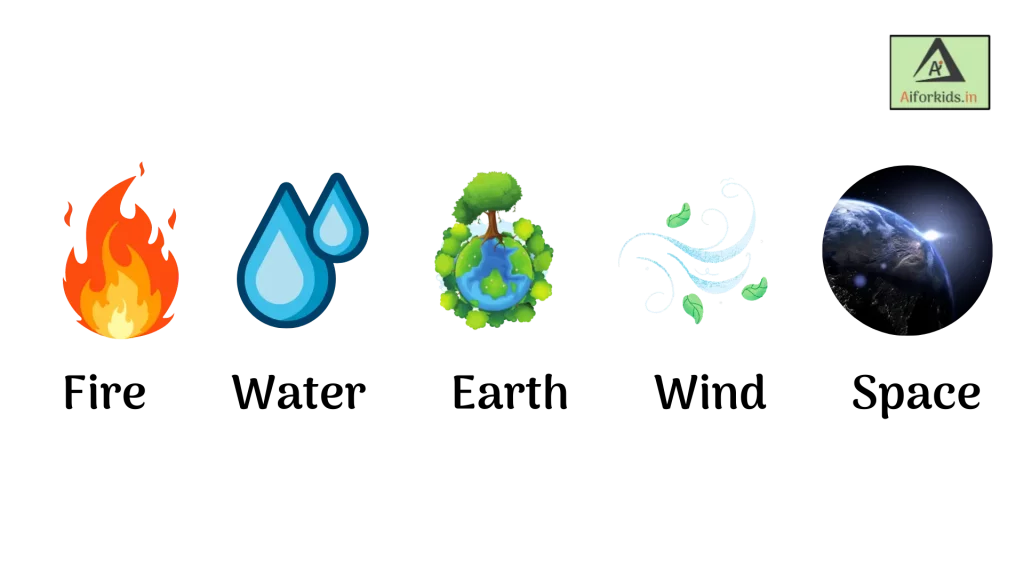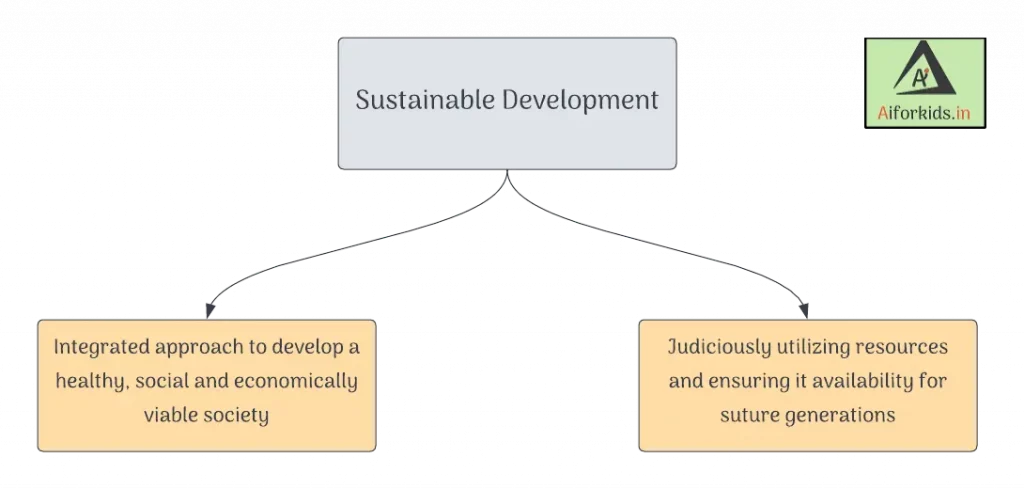This page will contain all the important topics of Green skills. It will help you to understand Green skills more clearly.

Introduction to Green Skills
Indian beliefs inform us that there has been a strong relationship between Man and Nature. Our forefathers knew the importance of the five elements of nature – Prithvi (Earth), Agni (Fire), Jal (Water), Vaayu (Air), and Aakash (Space).

The environment around us affects all aspects of our life and all our day-to-day activities also affect the environment and vice versa. We know that people who live in urban areas fulfill their need for food requirements from the villages by importing them.
These people live in rural areas that grow crops dependent on natural surroundings like forests, rivers, water, wood, fodder, etc. But over the years of development of the countries, we are polluting the environmental surroundings and exploiting the resources without thinking about the future generations. So now we should take steps about how to use these resources sustainably so that they will be very needful for future generations.
As per Collins English Dictionary, ‘the ability to be maintained at a steady level’ is Sustainability.
Sustainable development

The concept of sustainable development received its first major international recognition in 1972 at the UN Conference on the Human Environment held in Stockholm.
In this conference, it was to show the direction that how to use the resources in the correct way without exploiting them.
The concept of sustainable development formed the basis of the United Nations Conference on Environment and Development held in Rio de Janeiro in 1992.
Sustainable development was the solution to the problems of environmental degradation discussed by the Brundtland Commission in the 1987 report “Our Common Future”.
Collin’s English Dictionary defines Sustainable Development as the economic development that is capable of being maintained at a steady level without exhausting natural resources or causing severe ecological damage.
What is Sustainable development?
Definition of SDG: Sustainable development is the development that satisfies the needs in the present without compromising the resources for our future generations.
OR
Development that meets the needs of the present without compromising the ability of future generations to meet their own needs.
Sustainable development focuses on a long-term, integrated approach to developing a healthy, social, and economically viable society. The aim is to inculcate the value of self-resistance amongst the people to save natural resources for everyone to utilize judiciously while still ensuring their availability for future generations.
In our daily life, we can contribute to creating a Sustainable Society by following 4Rs’ and 1U of Sustainability. These are:
| Names | Definitions |
|---|---|
| Refuse | Not to use products that may not harm the environment. |
| Reduce | To minimize the use of the products that may cause harm to the environment. |
| Reuse | To reuse products as far as possible, in order to reduce the waste generation. |
| Recycle | After reusing the product, we must try to recycle it as far as possible. |
| Upcycle | Any product that is not usable can be upcycled with creativity and innovation. It gives a new look to the old product and makes it look desirable. |
In today’s generation, every country is busy with development, they are increasing the economical value of their country which is ultimately dependent on the natural environment from which they create goods and services. So, we can now say that in the present age environment is adversely affected, and with its increasing usage, our coming generations will have to face serious environmental issues.
All the reason behind this excessive usage is the Increasing the usage of these natural resources for an increase in production and as well as consumption because of the day by day increasing population. So, this sustainable development can also be done individually which can avoid exploiting the environment.
We can take an example also of Greenspace: Green spaces include all the parks and other areas also where plants and wildlife are encouraged for their lives. These spaces also offer the public great opportunities to enjoy outdoor recreation, especially in dense, urban areas like; Forests or wildlife centuries.
Importance of Sustainable Development

In the 21st Century, the importance of adopting sustainable techniques for sustainable development is of grave importance. Some of the importance are as follows:
- Judicious: Judicious use of resources is of prime importance since the exploitation of resources is causing their depletion.
- We need to curb our usage to ensure that resources like air, water, and forests are available to future generations.
- Quality: The quality of basic resources is deteriorating leading to major health concerns such as Cancer, Bronchitis, etc. Ensuring sustainability will help curb/control these problems.
- Rising demands: It is leading to economic disparity. The rich are becoming richer while the poor are becoming poorer.
- The uneven distribution of available resources across different economic fronts is leading to discrimination, giving rise to crime, and creating social imbalance.
- Environmental problems: Such as Climate Change, Emission of Green House gases are alarming. If everyone draws a line for themselves we will be able to combat these issues with the help of Sustainable Development.
- Adoption of Sustainable Development: The major importance is the Adoption of Sustainable Development in our daily life and at our workplace will also promote economic growth.
- Young entrepreneurs with minimum investment can produce better output.
- The introduction of Solar Power Plants, Waste Water Treatment Plants, Electric Vehicles, etc. will not only help in protecting Environment but shall also contribute to saving money and resources.
The economy that reduces environmental risks and strikes ecological balance is termed a Green Economy.
Problems related to Sustainable development
You might be thinking that with this Sustainable development we can achieve great changes in the future, but it causes some problems too. So, let’s discuss some of them one by one:
- Food: the amount of rich, fertile land which is used to grow crops is becoming less and less because this land is used up for some other purposes. Now the land which we are left with also getting depleted in the nutrients only because of using more chemicals to increase production to fulfill the needs of the large population.
- Water: all of us use the clean water from water bodies for our purpose but many of us dump garbage and release toxic substances into these bodies and after several years there will be no fresh water.
- Fuel: woods are used in the present age in large amounts as fuel, for the construction of buildings or furniture, etc; for which many trees are cut down. In the future, it may cause severe climatic changes and weather changes too.
Sustainable Development Goals (SDG)
The Sustainable Development Goals (SDGs) were launched at the United Nations Sustainable Development Summit in New York in September 2015. To ensure that Sustainable Development is ensured in our communities and the world at a large level as a universal call to action to end poverty, protect the planet and ensure that all people enjoy peace and prosperity by 2030.
UNDP: United Nations Development Program
These SDGs are integrated and recognize that action in one area will affect outcomes in others, and that development must balance social, economic, and environmental sustainability. These are:
- No poverty
- Zero Hunger
- Good Health and Well Being
- Quality Education
- Gender Equality
- Clean water and Sanitation
- Affordable and Clean Energy
- Decent Work and Economic Growth
- Industry Innovation and Infrastructure
- Reduced Inequalities
- Sustainable Cities and Communities
- Responsible Consumption and Production
- Climate Action
- Life Below Water
- Life on Land
- Peace, Justice, and Strong Institution
- Partnership for the Goals

Problems related to SDGs
To achieve Sustainability for next-generation, the whole world needs to come as one. This is the biggest challenge in realizing this goal because of the following reasons:
- A large population in major parts of the world is living an underprivileged life and is excluded. For them earning a meal each day is a challenge. Under such circumstances, expecting an alteration in their mindset or behavior is not easy.
- A huge population in the world’s economy is unemployed. Any means of earning whether sustainable or not is their ray of hope.
- With the existing issues of climate change, a number of species have extinct and many are on verge of their extinction. Under such circumstances striking a balance in the food chain is a big responsibility.
- The market all over the world is trying to capture as many resources as possible to maximize their profit. In pursuit of maximizing profit, they overuse and exploit the resources.
- In the time of the nuclear race, where every developing country is trying its hand to become a developed nation, ensuring world peace is a global challenge.
- It is the responsibility of every country to ensure having a full-proof policy for Sustainable Development. While the challenge remains that many are simply leaving loose ends in the execution of policies.
- Last but most important, while it is the responsibility and accountability of every individual to promote Sustainable Development, there is a huge world population that is simply insensitive towards its need.
If we as individuals become alert and cautious towards creating and promoting sustainable development, we will certainly be able to have a flourishing green economy where interdependence will be appreciated and our future generation will be able to lead a healthy life
